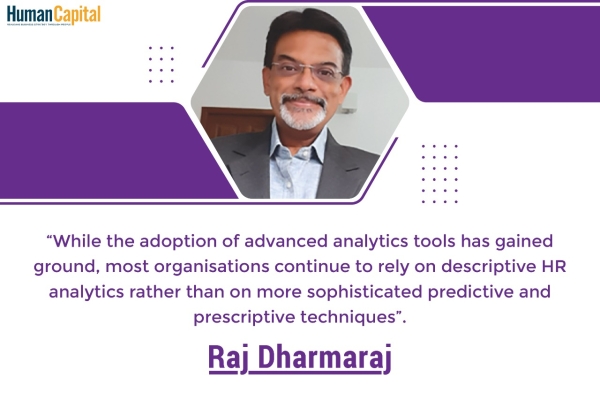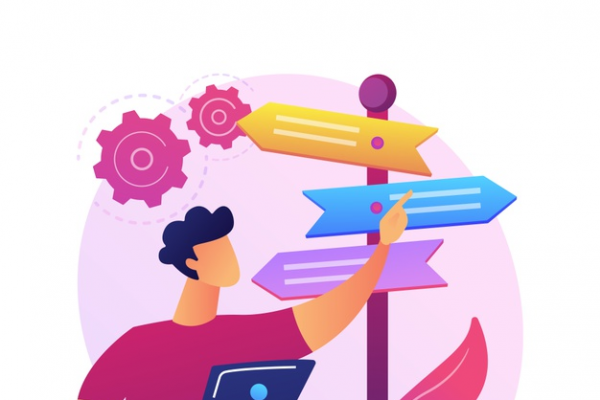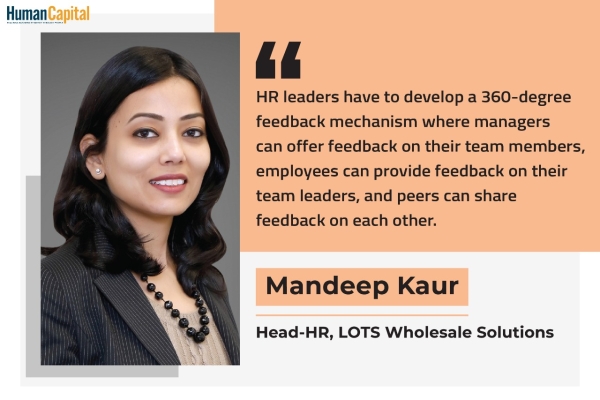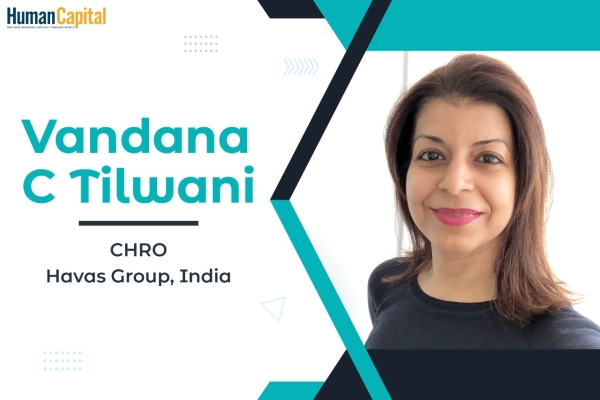The predictive model is here to stay - far more accurate and consistent than human judgement, in terms of forecasting performance and outcomes, and addressing key dimensions applicable to business contexts as much as sport…
Midway and two sets into the 2022 Australian Open men’s tennis final, the match’s Win:Loss predictor read 96% D.Medvedev: 4% R.Nadal. Across the world, thousands of disappointed Nadal fans switched channels and turned-off social media feeds. Yet 3 hours later, Nadal emerged victorious, with a stunning display of mental and physical skill and toughness! Internet memes were quick to cite the fallibility of the Artificial Intelligence (AI) powered predictor - in actuality, the underlying algorithm improved, adding data variables and updating its complex underlying logic. The predictive model is here to stay - far more accurate and consistent than human judgement, in terms of forecasting performance and outcomes, and addressing key dimensions applicable to business contexts as much as sport:
- What underlying factors determine eventual outcomes?
- What characteristics differentiate the talented from super-achievers?
- How can such attributes be identified and trained to enhance performance?
Answers to these represent part of the ’holy grail’ of Predictive Analytics for HR. While analysing employee information is not new, the usage of complex analytics by the HR function has surged over the last two decades, led by Google’s much-vaunted use of data to drive the best possible talent and people-related decisions.
.png)
HR Analytics: An Overview
Within the HR function, hiring was perhaps the first area that collected datapoints to evaluate job applicants, the foundation for a range of customised heuristics that companies use to select candidates. HR Analytics has grown rapidly since those origins - vast amounts of untapped employee-related data exist within organisations, and usage of sophisticated tools to unlock insights from people-related information is growing exponentially. Today, the HR Analytics market in terms of products’ and services’ value, is an estimated $2.5 to $3.5 billion, with solution providers ranging from mainstream HR Enterprise software firms to specialist analytics firms offering a blend of behavioural and data science expertise and HR advisory services.
In a 2019 research paper on the people analytics market, Deloitte classified activities undertaken by organisational analytics teams as ranging from past-focused (descriptive) to forward-focused (prescriptive), and described the progression of activities from the basic “What happened?” and “Why did it happen?” to more advanced “What will happen?” and “How can we make it happen?”
HR.com and Oracle, in a 2021 research study, proposed a related categorisation of this landscape - descriptive, insightful, predictive and prescriptive HR Analytics. While the adoption of advanced analytics tools has gained ground, most organisations continue to rely on descriptive HR analytics rather than on more sophisticated predictive and prescriptive techniques. As per HR.com research, 68% of HR departments make at least moderate use of descriptive analytics, 34% make moderate use of predictive analytics and 43% moderate use of prescriptive analytics, while only 15% make high or very high use of predictive or prescriptive analytics. In effect, HR Analytics is moving from outlining causality between variables and impact, to the complex prediction of future peopleevents and recommendations to influence desirable outcomes.
Predictive Analytics across the HR
Lifecycle Predictive Analytics has gained popularity in recruitment and retention management, and now finds application across the HR lifecycle. It encompasses a range of statistical tools, including Machine Learning (ML) algorithms, deep learning, data mining, and AI, to create predictive models - extracting information from data, identifying patterns, and providing predictive scores for a variety of organisational outcomes.
Advanced users of predictive analytics for HR are moving away from ‘random’ application of tools, to strategic deployment, focusing on business solutions and integrating multiple data sources across organizational boundaries – Mohinish Sinha, Partner Deloitte India
According to Mohinish Sinha, (Partner - Deloitte India), this space is rapidly changing, with organisations moving away from reactive and tactical application of analytics, toward more strategic business applications, integrating cross-functional internal and external data sources. Sriram Iyer (CEO, Hrtech.sg), has been tracking the dynamically shifting provider landscape being driven by technology shifts. Boutique data analytics firms are expanding horizons to target people-related challenges, while traditional enterprise HR system providers are adding capabilities to mine massive employee datasets for insights, forecasts and strategic decision making. In his view, the most important principle for successful analytics programmes is defining the right business problem. Expanding further, Vijayshankar Ananthanarayan (Global Head of Transformation, Darwinbox), calls out elements key to building Predictive Analytics capability - data silo integration, ensuring data privacy controls, encouraging data democratisation and seeking ways to build meaningful business narratives from underlying data.
1. Talent Sourcing & Supply
> Modelling optimal talent supply sources, mapping performance of hires across entry-level and lateral recruits against sourcing channels, skill-fit, engagement and productivity levels.
> Following Google, almost every large technology services firm is making use of talent sourcing software algorithms to improve talent search-andmatch.
> Behavioural science coupled with technology, to assess organisational fit – video based interviewing for analysis of voice stress and visual cue patterns, and simulation interviews, to evaluate judgment and decision-making skills, mirroring real-life situations.
2. Skilling and Deployment
> Making talent build vs buy HR decisions more effectively than human judgement, especially as hybrid work, part-time and gigbased options proliferate.
> AI-based assessments, predicting skill-adjacencies upto 40% more accurately, as demonstrated jointly by Unilever and Walmart, to enable upskilling, cross-training and redeployment of employees at risk of redundancy
HR Analytics needs to first define the business problem being addressed – Sriram Iyer, CEO Hrtech.sg
> Internal and external ‘Talent Marketplaces’, powered by underlying skill-role match algorithms providing deeper insights for HR decisionmakers.
> ‘Hyper-personalisation’ of learning – leveraging analytics to customise interventions to individual preferences and capabilities, to increase learning effectiveness.
3. Employee Experience & Engagement
> Optimising every ‘moment of engagement’ for employees, harnessing the ability to continuously track, ‘listento’ and interpret employee sentiment across diverse forums – pulse check-ins, internal communications, portals, as well as external social media and job-site related commentary.
> Generating frequent realtime snapshots of employee sentiment, correlating to network interactions, and predicting outcomes such as attrition, while recommending mitigating interventions. HP was one of the earliest adopters of ‘flight-risk scoring’, predicting individual employee attrition risk, and viable retention approaches.
> Organisational Network Analysis (ONA) offering insights into the ‘hidden’ organisation structure underpinning formal hierarchy – identifying the ‘most-connected’ employees to evangelise enterprise communication, and determine pockets of disengagement that block transparent messaging.
Meaningful data interpretation is key to successful adoption of HR analytics. ‘Sense-making’ and building narratives around the ‘so-what’ of data is critical – Vijayshankar A, VP, Darwinbox
> ONA in identifying ways to improve collaboration in organisational contexts, providing valuable insights for improving cohesion and engagement, especially in the virtual hybrid workplace
4. Performance and Career Management
> Performance management predictors cover indicators as diverse as academic background, engagement levels, and supervisor-reportee interactions. Best Buy, the electronics retailer’s finding that marginal improvements in engagement levels of its employees, led to a dramatic increase in store revenue.
> Google as one of the earliest employers determining that academic track record had no significant correlation with onthe-job performance, enabling redesign of interview and selection processes, for more successful hires.
> Leadership development and coaching platforms, using a combination of predictive and behavioural analytics, coupled with ONA to identify potential, fine-tune coach selection, and improve the impact of interventions using behavioural ‘nudges’ and feedback.
5. Total Rewards
> Reshaping compensation modelling and total rewards (TR) design using analytics, including Mercer research on analytics-based TR design offering powerful ways to refine and tailor compensation and benefit packages to specific employee needs.
> Optimising TR strategy using interdependencies between compensation structure, benefits, incentives, performance management and engagement.
> Future cost-modelling using compensation analytics and prediction, especially for services industries, where employee costs are a major determinant of organisational top and bottom-line ¾ Prioritising pay-equity across employee segments, deploying predictive analytics to test, develop and redesign more equitable and sustainable organisational compensation structures. 6. Culture & Change Management ¾ Using real-time employee sentiment and network analyses to craft enterprise transformation programmes, leveraging key influencers and providing early warning indicators of pockets of dissent or non-collaboration.
> Tailoring communication campaigns and change interventions to specific groups or individuals, akin to usage in large-scale political campaigns, such as Brexit or national elections, ensuring the adoption of a common narrative and shared values.
> ONA deployed in M&A deals to identify and address key influencers, evangelists and detractors, and employee values and beliefs, to improve the success of mergers, where culture is often the biggest determinant of success.
> Developing and refining D&I programmes, using data and predictive modelling to track, forecast and enhance effectiveness and internalisation of these initiatives across the enterprise.
Predictive Talent Analytics – Five future takeaways
As the future of HR Analytics unfolds rapidly, against the backdrop of an emerging world of hybrid, postpandemic work and challenges of the great migration, the five takeaways for HR professionals to bear in mind when developing their analytics capabilities are:-
1. Begin with the business perspective and problem to be solved. Start small, build out ‘pilot’ and localised hypothesis testing, rather than attempt enterprise solutions immediately
2. Data quality & integration are key: Identify data from multiple internal and external sources across silos, and be aware of wider cross-functional and systemic influences that can impact interpretation and analyses.
3. Establish ethical stewardship to avoid pitfalls: Blind implementation of analytics programs can have multiple negative impacts, ranging from employee data privacy violations, unwittingly building in bias into algorithmic decisions such as hiring, and manipulative usage of insights to influence behaviour
4. Push for Data democratisation, with suitable controls: To increase transparency and access to appropriate levels of data. Empowering business managers to own HR decisions can improve agility and impact of people analytics programs, as long as they are tempered with ethical governance mechanisms
5. Focus on opportunities for ‘sense making’: Harnessing the power of analytics to uncover deeper untapped stories from relevant data - such as predictors of resilience and thriving, or the hidden ‘signal-value’ of siloed initiatives such as pay increases, that can potentially have unintended repercussions on employee morale.
In summary, to paraphrase Peter Drucker’s famous quote, if the best way to predict the future is to create it, then Predictive Analytics offers HR a golden opportunity to reshape the future world of work, starting now.
References
1) ‘People Analytics – Here with a Vengeance’ – Josh Bersin – Forbes 2017 https://www.forbes.com/sites/joshbersin/2017/12/16/ people-analytics-here-with-avengeance/?sh=7a42494432a1
2) HR Analytics Market Size, Share & Trends Analysis Report “- GV Research May 2020 https://www. grandviewresearch.com/industryanalysis/hr-analytics-market
3) People Analytics Solutions Market Primer” – Deloitte Market Landscape – 2019 https://www2.deloitte.com/ content/dam/Deloitte/us/Documents/ human-capital/us-human-capitalbersin-lt-people-analytics-solutionsmarket-primer.pdf
4) Predictive Analytics in Human Resources – AIHR 2022 - https://www. aihr.com/blog/predictive-analyticshuman-resources/
5) The State of HR Analytics 2021 – HR.com - https://www.oracle.com/a/ ocom/docs/applications/humancapital-management/hrt-talentanalytics-hrdotcom.pdf
6) Predictive Analytics – Heavy.AI https://bit.ly/3Ce4HxX 7) ‘How AI can unlock hidden talent in the workplace – WEF.org -June 2021 https://www.weforum.org/ agenda/2021/06/jobs-work-skillsfuture-automation-ai/
8) ‘Predictive Analytics – The Power to Predict Who Will Click, Buy, Lie’ – Dr. Eric Siegel, Wiley & sons – 2012 9) 4 Ways HR Analytics Must Evolve for the Current Landscape – Gartner Insights 2022 https://www.gartner. com/en/articles/4-ways-hr-analyticsmust-evolve-for-the-current-landscape
10) Interview – Mohinish Sinha Partner Deloitte India - linkedin.com/in/ mohinish
11) Interview – Vijayshankar Ananthanarayanan – VP and Global Head Transformation – Darwinbox - linkedin.com/in/vijayshankar-a
12) Interview – Sriram Iyer – CEO and Founder hrtech.sg – linkedin.com/in/ theiyer
Is your organisation post-COVID-ready?
Trending
-
SBI General Insurance Launches Digital Health Campaign
-
CredR Rolls Out 'Life Happens' Leave For Its Employees
-
Meesho Announces 30-Week Gender-Neutral Parental Leave Policy
-
Microsoft Unveils Tech Resilience Curriculum To Foster An Inclusive Future
-
60% Indian Professionals Looking For Job Change Due To COVID: Survey
-
SpringPeople And Siemens Collaborate For Digital Transformation Push
-
86% Professionals Believe Hybrid Work Is Essential For Work Life Balance: Report
-
Almost 1 In Every 3 People's Personal Life Affected Due To Work Stress
-
Meesho Rolls Out Reset And Recharge Policy For Employees
-
80% Of Talent Leaders & Academics Say Pandemic Changed Skill Needs For Youth: Report
-
Hero Electric Rolls Out 'Hero Care' Program For Employees
-
Human Capital In Collaboration With ASSOCHAM Hosts Virtual Conference
-
IKEA India, Tata STRIVE Collaborate To Create Employability And Entrepreneurship Opportunities
-
SAP India, Microsoft Launch Tech Skilling Program for Young Women
-
DXC Technology, NASSCOM Collaborate For Employability Skills Program
-
Lenskart To Hire Over 2000 Employees Across India By 2022
-
Mindtree Launches Learn-and-Earn Program
-
Tata AIA Extends 'Raksha Ka Teeka' To Its Employees
-
Swadesh Behera Is The New CPO Of Titan
-
NetConnect Global Plans To Recruit 5000 Tech Professionals In India
-
Hubhopper Plans To Hire 60% Of Indian Podcasters By 2022
-
Corporate India Needs More Women In Leadership Roles: Report
-
Aon to Invest $30 Million and Create 10,000 Apprenticeships by 2030
-
Tech Mahindra Launches ‘Gift a Career’ Initiative for Upskilling of Youth
-
40% Women Prefer Flexible Working Options in Post-COVID World: Survey
-
3 out of 4 companies believe they can effectively hire employees virtually: Report
-
Vodafone , CGI and NASSCOM Foundation launch digital skills platform
-
Odisha: Bank, postal employees to deliver cash for elderly, differently-abled persons
-
Skill India launches AI-based digital platform for "Skilled Workforce"
-
Hiring activity declines 6.73% in first quarter: Survey
-
70% startups impacted by COVID-19 pandemic
-
Bajaj Allianz Life ropes in Santanu Banerjee as CHRO
-
Over 70 Percent MSMEs look at cutting jobs to sustain businesses
-
93 Per Cent employees stressed about returning to office post-lockdown
-
Johnson & Johnson India announces family benefits for same gender partners
-
Indian firms turning friendly towards working mothers
-
Welspun India names Rajendra Mehta as new CHRO
-
Wipro partners with NASSCOM to launch Future Skills platform



Human Capital is niche media organisation for HR and Corporate. Our aim is to create an outstanding user experience for all our clients, readers, employers and employees through inspiring, industry-leading content pieces in the form of case studies, analysis, expert reports, authored articles and blogs. We cover topics such as talent acquisition, learning and development, diversity and inclusion, leadership, compensation, recruitment and many more.
Subscribe Now













































Comment